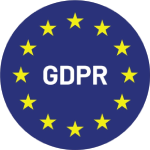Protecting Data in NoSQL Databases – Ensuring Privacy and Safety
There are large amounts of very sensitive data scattered over many servers on NoSQL databases. In that respect, it is essential not only to maintain those, but also to observe various rules like the GDPR and HIPAA laws. Securing NoSQL is mainly about securing the data when at rest or when in motion, which includes controlling who can see and modify, ensuring legal meets, and figuring out how much of a control is established within the organizations.
Here is a crisp take on the dynamics of NoSQL security. We will delve into encryption, how role-based access control (RBAC) helps in the management of permissions, and how NoSQL databases comply with the well-known HIPAA and GDPR regulations.
Data Encryption at Rest and in Transit
NoSQL encrypts data either when it is stationary, or “at rest” as known in the industry, or when it is moving from one system to another, which is called “in transit”.

Encryption at Rest
Encryption at rest refers to the data that is stored on hard disks encrypted. It prevents data in storage from theft or unauthorized access to the physical hardware. NoSQL databases such as MongoDB have prebuilt mechanisms for encrypting data transparently. They usually use systems handling encryption keys separately, so even if someone gets the disk, they would be unable to read the data without the encryption key.

Encryption in Transit
At inception, encryption in transit would actually lock the data as it travels throughout the network-like when an app talks to the database. Since usually NoSQL systems are distributed across many servers and often some are atypical, it’s very important. This is done normally using TLS. The data, encrypted so that it can be uselessly scrambled and piratical, avoids both interception attempts and any tampering once on the transfer. Perpetual framing and transit thus keep many a vast share of potential risks away from their respective data.
Role-Based Access in Popular NoSQL Databases
You guessed it: give only the right people permissions, and voila! Even better, evaluate your data privacy options because you will have controllable access in place and control any access to the data. As an organization, you will most likely need one or more access solutions to prevent reach for unauthorized access.
MongoDB RBAC
Indeed, at various levels such as the whole cluster or single databases, administrators are free to assign different roles in MongoDB to users. Consequently, it is ensured that users receive no unnecessary access.
Cassandra RBAC
Cassandra made its own RBAC system, and it can act as detailed permissions for both various keyspaces and tables. It can as well let roles start inheriting statuses and privileges from another status or privilege-it is beneficial to those organizations with very complex structures.
Couchbase RBAC
It manages access to data containers, which is termed as the buckets and collections. It has two predefined roles and particularly defines roles for the proper demarcation of duties and controlled access by users.
Enforcing RBAC can minimize threats such as accidental data leaks, as well as insider threats by making sure that users obtain exactly the required access level.
HIPAA and GDPR Compliance with NoSQL
The two main rules which also cover any personal data include HIPAA, for health data in the U.S., and GDPR, which cover all sorts of personally identifiable information in the European Union. Thus, NoSQL databases need to be aligned with these rules to support them and to get out of the jurisdiction that has threatened most of the people- the law.

HIPAA Compliance
Indeed application of HIPAA with health indicators to the concern is effected and may necessitate guarding active information against patient health information (PHI). Protection is in the provision of data security, where roles and functions should be assigned, logging events performed by anyone and that the information is always there as well as accurate. It should be added that many NoSQL systems offer audit logging and important antivirus tools for offering stiff solutions meeting HIPAA’s standards.

GDPR Compliance
The implementation of GDPR is designed to safeguard personal information and assured ownership. While requiring certain things such as allowing users to see, to redo or even destruct their personal data. However, NoSQL databases have become a kind of storage with quite flexible and distributed data storage, so the process can be quite difficult. Now, with the said challenges, the world expects nothing but access to new features like data masking, anonymization, and also fine-grained access control.
Summary
Protecting NoSQL systems is essential for the overall security of an organization. Securing in this sense really pertains to managing data infrastructures so that no access to any data is allowed without a user’s permission, soundly implemented in IoT, for example. For example, data can be encrypted for lands in field data and in motion. Users can only meet access based on their required actions, and there should be governance over RBAC objects. Compliance is building a technical foundation and an infrastructure of organizational policies.
This is particularly important given that most security is application-level. A point of technical policy is prescribed for NoSQL database use. Thus, the security features and how these comply with one’s necessity for compliance should be understood. It is good if your organization combines several technical controls and good processes to have secured data and, more important, to enable a kind of better security.
